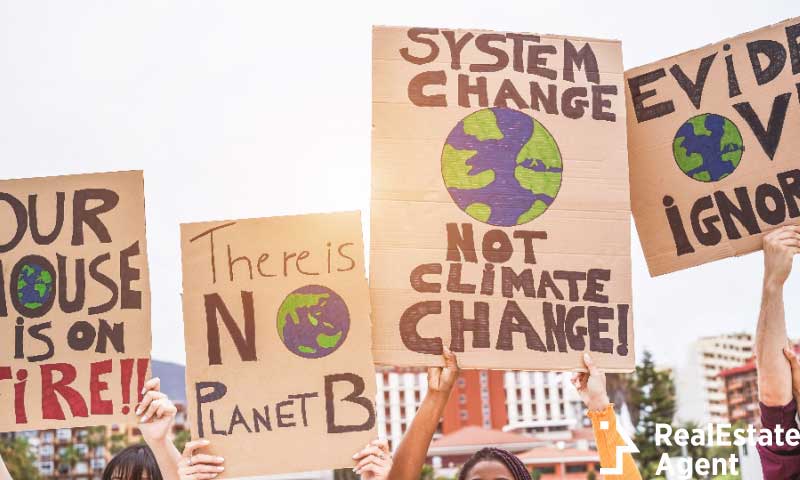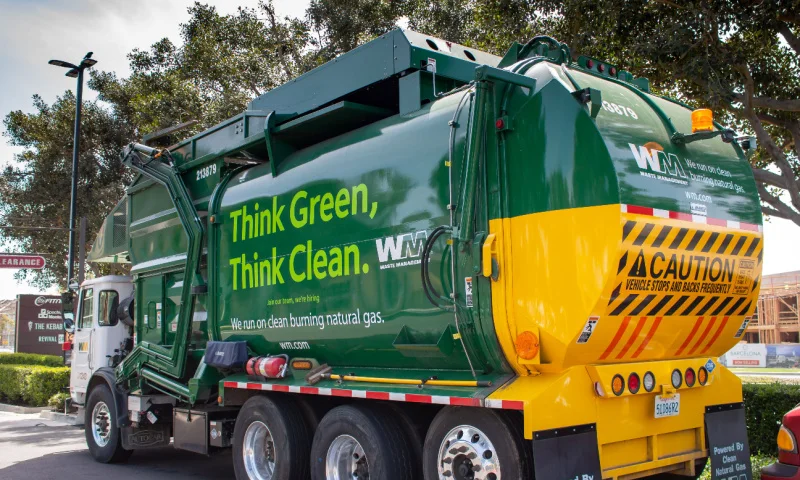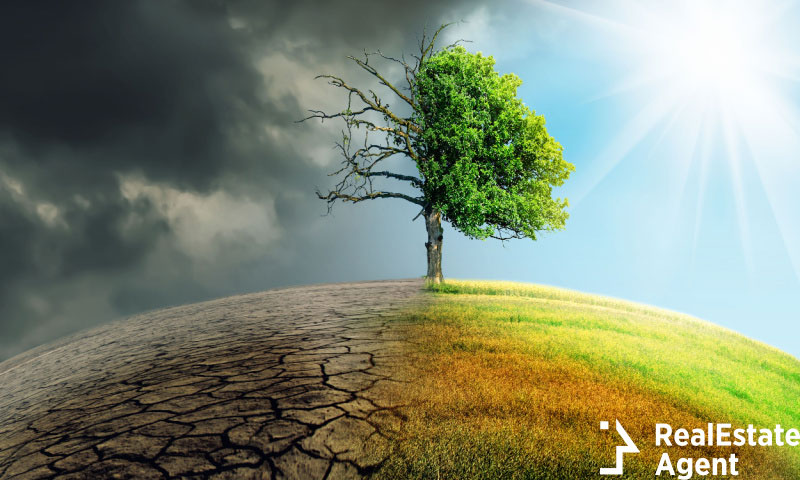Climate change got out of hand, the apocalypse is here, and we are doomed. We can just go about our business as usual, and wait for the world to burn, because there’s nothing we can do about it. …Or is there? The alarmist language of doomists and catastrophists doesn’t go unnoticed. While it’s important to have strong voices to raise awareness to the severity of the problems we are facing globally, a catastrophist approach just isn’t helping the cause. Climate change needs more realists to find the key for a sustainable future, and raise awareness by maintaining the legitimacy of the cause. Sober, realistic voices are needed to inform, raise awareness, and take on a solution-oriented approach, that has sustainable prospects in the future.
In this article we are going to explore climate change issues, and the interesting phenomenon of doomists and catastrophists, and also, what we need to do on an individual level to live a more environmentally conscious life. So, stick around!
Article Summary:
- Causes of climate change
- Effects of climate change
- Why is the alarmist language harmful?
- Climate change solutions
- Unseat the doomists!
Causes of climate change
First, a recap because you can never learn enough. Climate change is first and foremost caused by human activities, which release large amounts of greenhouse gases into the atmosphere. These gases are mostly carbon dioxide (CO2), methane (CH4), and nitrous oxide (N2O). These gases trap the heat in the earth’s atmosphere, causing the planet to warm. The following activities are the main contributors to greenhouse gas emissions and ultimately, climate change.
Electricity and powering buildings
Generating power is mainly done by burning fossil fuels like coal, oil, or gas. Those produce carbon dioxide and nitrous oxide – which are potent greenhouse gases. As one of the leading causes of climate change, powering our buildings consumes more than half of all the electricity there is.
Production
Manufacturing (and most industries) burn fossil fuels to generate energy for producing goods. Cement production, steel manufacturing, and chemical production emit large amounts of greenhouse gases. Machines used in manufacturing are also powered mainly by burning fossil fuels. Mountains of low-quality clothes are decomposing in landfills, emitting methane thanks to the environmental disregard of the fashion industry.
Deforestation
Cutting down forests to make space for farms, agriculture, or pastures is severing nature’s ability to control the emissions in the atmosphere. Forests absorb carbon dioxide and are crucial for our well-being. Deforestation and changes in land use make up a quarter of the total greenhouse emissions.
Transportation
Most vehicles run on fossil fuels, which makes transportation one of the top emitters of carbon dioxide. Transportation is responsible for nearly a quarter of carbon dioxide emissions. And while there are green car energy options, tendencies still show an upcoming increase in energy usage for transport.
Food production
Deforestation, using fertilizers and chemicals, and the energy to operate farm machines are among the causes of climate change, too. Food production, transportation, and packaging add a significant chunk to global emissions.
Consumerism
Many small things add up, and our lifestyles also contribute to greenhouse gases and climate change. How we consume and what we consume can make a big difference, for better or worse. Consumerism is among the causes of climate change. It’s alarming to know that the wealthiest 1% is responsible for more greenhouse emissions than half of the whole population of the earth.
Effects of climate change
These are the primary effects of climate change.
Warming up
More greenhouse gases means more warmth. We have been experiencing a warming up since the 80s, with the last decade being the warmest. Heat-related illnesses and working outdoors are becoming harder because of more hot days and heat waves all over the world. Wildfires start more easily and persist more easily, and meanwhile, the arctic ice is melting.
Storms
Rising temperatures make more moisture evaporate, which causes more severe storms and flooding. The warming ocean affects the severity, frequency, and extent of typhoons, hurricanes, and cyclones, taking many lives and causing enormous economic damage.
A rising ocean
The oceans work like a cooling system, soaking up the heat from the atmosphere. This leads to warming, which then results in an increase in water volume. Water expands in a response to warming, with the melting ice also contributing to the rising of sea levels. The ocean absorbs carbon dioxide from the atmosphere, but there’s only so much it can absorb. Too much of it makes the ocean more acidic, posing a danger to marine life and putting a question mark above the future of the phytoplankton – which is crucial for our oxygen and for the marine ecosystem.
Drought
Water availability is becoming more limited in specific areas, affecting the food supplies and the whole ecosystem. The deserts are expanding, sandstorms are more frequent, and many people are forced to eave their homes because of water scarcity.
Extinction
Wildfires, invasive species, and extreme weather are causes of climate change and the extinction of species. The world is losing its diversity 1,000 times faster than any time before. There’s an estimate of one million(!) species at risk of completely disappearing from the face of the earth in the next decades.
Food shortage
With desertification and extreme weather events becoming more frequent climate change is leading to food shortages. Many people are suffering from hunger, and even their most basic needs, like water, are becoming a luxury. The ocean’s acidity is putting at risk the marine resources on which billions of people depend. Heat stress is destroying grazing pastures, and the world’s food supply chains are experiencing disruptions in many other areas caused by climate change.
Poverty and health risks
Natural catastrophes caused by extreme weather keep pushing people into poverty by destroying their homes and goods. Water scarcity affects crops leading to poor nutrition and health issues. 13 million people die yearly because of environmental factors, while 23.1 million are forced to leave their homes. Pollution causes health issues even in developed countries that are prepared to face the effects of climate change.
Why is the alarmist language harmful?
Reading about climate change might sound like doomsday is really just around the corner. And while there are disturbing truths, in reality, the use of extreme and alarmist language can be counterproductive. If we want to reduce the impact of climate change, motivating action should be the number one priority. And catastrophism doesn’t help with that.
A sense of hopelessness
Doomsday messaging can lead to a sense of hopelessness and inaction, as people can feel overwhelmed by the magnitude of the problem and believe that nothing they do can make a difference. It’s a kind of climate depression that’s really easy to succumb to. We know that the modern lifestyle is bad for the environment, but we need solutions too.
The catastrophist rhetoric can also lead to a lack of trust in the scientific community, making it more difficult to build the necessary will to take action on a larger scale. The extreme language used by doomists and catastrophists can also polarize the debate. This can make finding common ground and reaching a consensus more difficult.
It’s important to acknowledge the severity of the climate crisis and recognize the urgent need for action. Still, finding a balance between communicating the seriousness of the issue and inspiring action is also crucial. A more positive and solution-oriented approach can go a long way in engaging people and inspiring action.
Climate change solutions
Nearly all climate change solutions focus on reducing carbon dioxide emissions. This can be done by burning less fossil fuels and looking for investing opportunities in green energy sources. Transportation, as one of the main contributors to global emissions and climate change, should also switch to sustainable solutions and minimize air transport. Restoring nature is important in finding solutions for climate change and absorbing a portion of the carbon from the atmosphere. Fighting for the protection of forests is crucial because companies cut them down to make more space for farming and palm oil production. This destroys the plants which have the most potential to absorb huge amounts of carbon. Protecting the oceans, by reducing our consumption (and choosing what kind of products we consume) all contribute to climate change solutions with a little something. It’s a battle between plastics and the world, and who wins depends on our contribution too.There are lots of things we can do on a personal level, too, to decrease the negative effects and the strain we put on nature. In the end, we get to decide if we are the blue planet or the plastic planet.
Unseat the doomists!
Doomists and catastrophists are actually quite similar to agitators. They share the similarity of being counterproductive to the causes they claim to support. They work individually or in groups and use language and different tactics to draw attention to a cause or issue. While they may believe that their actions are necessary to bring change, they often alienate potential supporters and undermine the credibility of their cause. Creating a sense of fear, hopelessness, and despair can turn people away and make the fight for the cause more difficult.
Spot the underminers
Also, it’s important to know that agitators are often present to cause trouble. Think about protests: often, agitators are the marionettes of political forces sent to protests to create trouble and undermine the credibility of important causes people are fighting for. Unfortunately, this is often the case with climate change: doomists and catastrophists can sabotage the cause.
It doesn’t even have to be deliberately troublemaking: actions that cause shock are most likely counterproductive. Exaggeration can repress the softer, more rational voices which should, in change, be heard. This can undermine and slow down the fight against climate change – to the advantage of the big corporations most responsible for it happening.
In the same way, splashing some tomato soup on art won’t draw attention to climate change solutions –it will only send out the message that we shouldn’t listen to climate activists because they are out of their minds.
A realistic vision
It’s crucial to have a realistic vision when it comes to climate change. A realistic vision means acknowledging the current reality and the challenges we face while also focusing on practical solutions and opportunities for paving the path towards a sustainable future. It’s more effective to communicate the seriousness of climate change in a way that inspires action and mobilizes people without creating a sense of despair or hopelessness.
Still, we need to be honest about our challenges and the urgent need for action. A realistic vision of a sustainable future strikes a balance between the harsh reality of the situation and the positive prospects of our actions to find solutions.
Small contributions
Lots of little add up. By changing your lifestyle and making conscious choices about what you choose to consume, and how much waste you produce, you contribute to the battle against climate change. By choosing sustainable traveling, buying less plastic, and changing your daily habits you already set an example. The more people live consciously, the louder the voices are, and the chances to succeed politically are greater.
Lastly,
Climate change is a complex and urgent global challenge that requires immediate action. While it’s important to acknowledge the severity of the problem, it’s also important to avoid using extreme language or messaging that may lead to a sense of hopelessness or undermines the credibility of the cause.
As individuals, we can take action by reducing our own carbon footprint, advocating for policy changes, and supporting organizations and initiatives that are working towards climate change solutions. By working together, undivided by catastrophist rhetoric, we can take on the challenges of climate change and work for sustainable, long-lasting solutions.



















